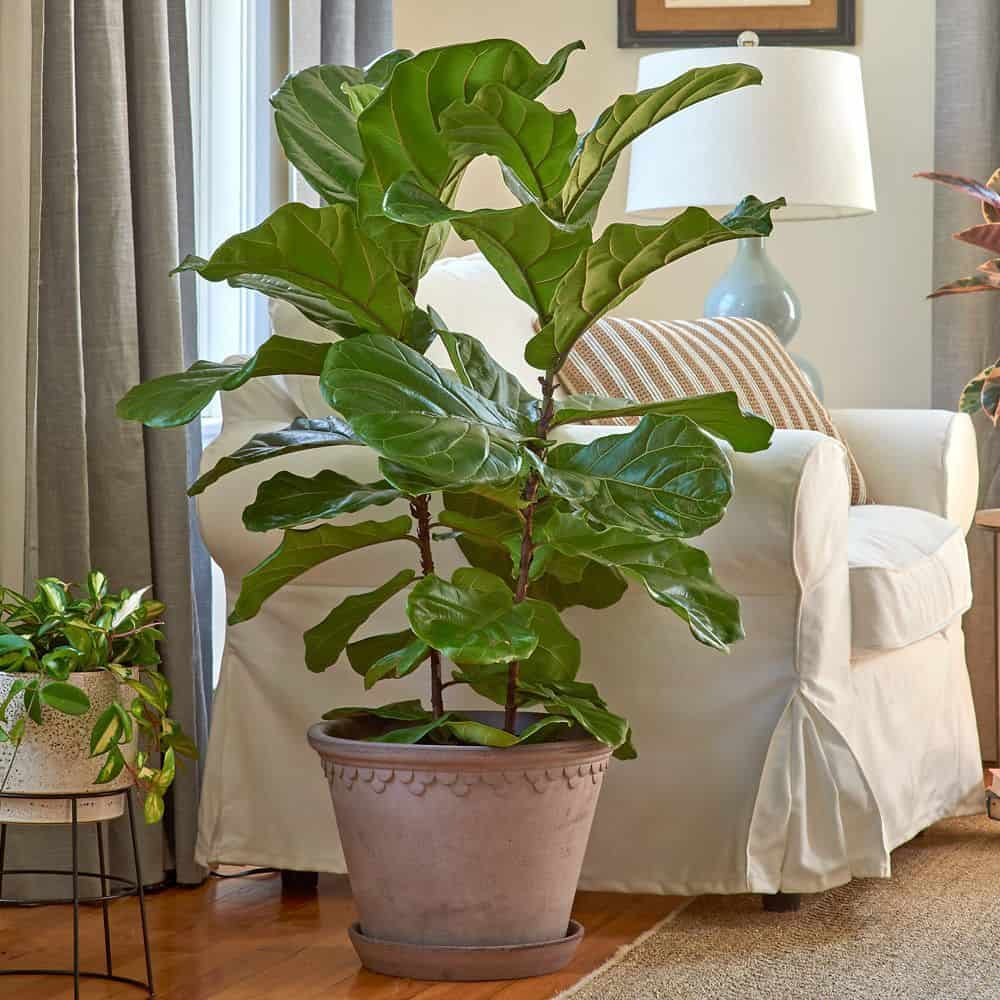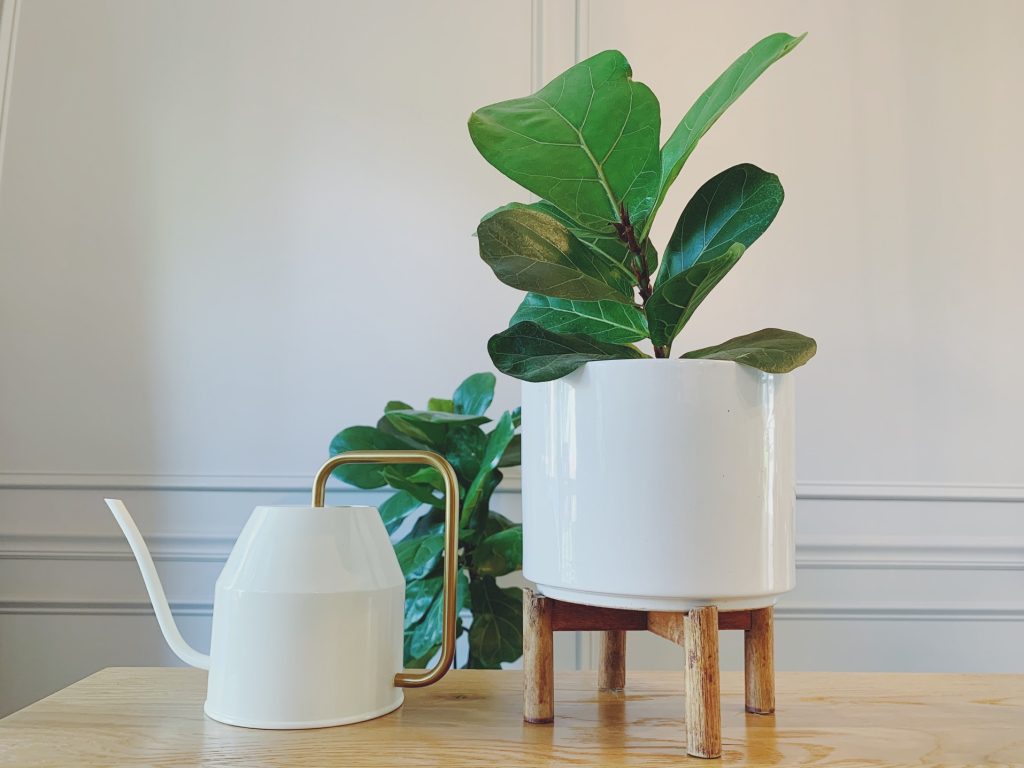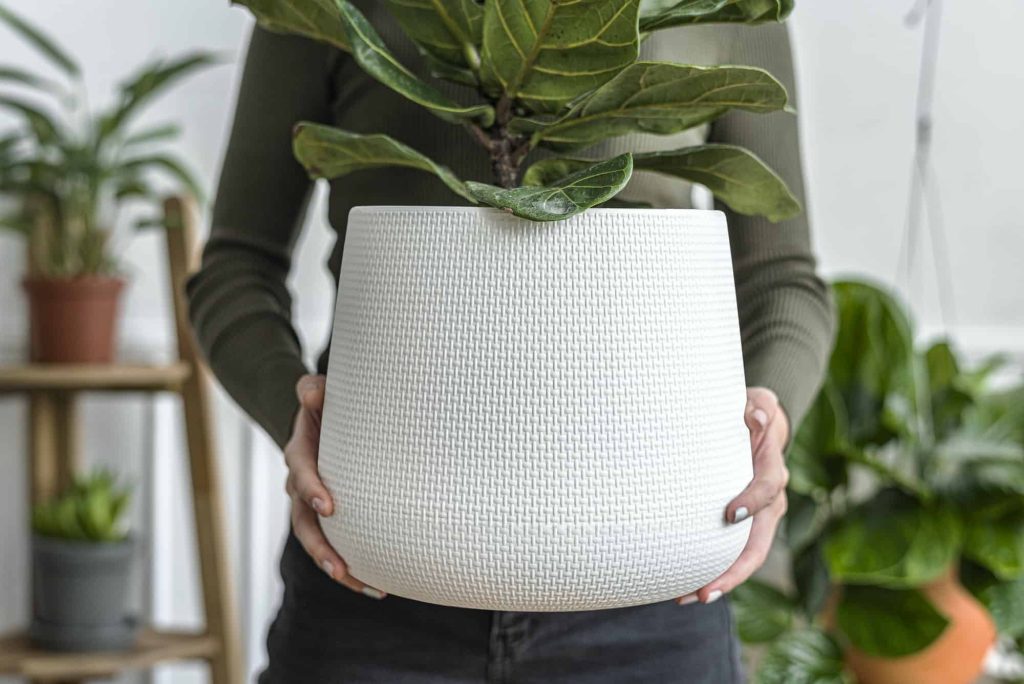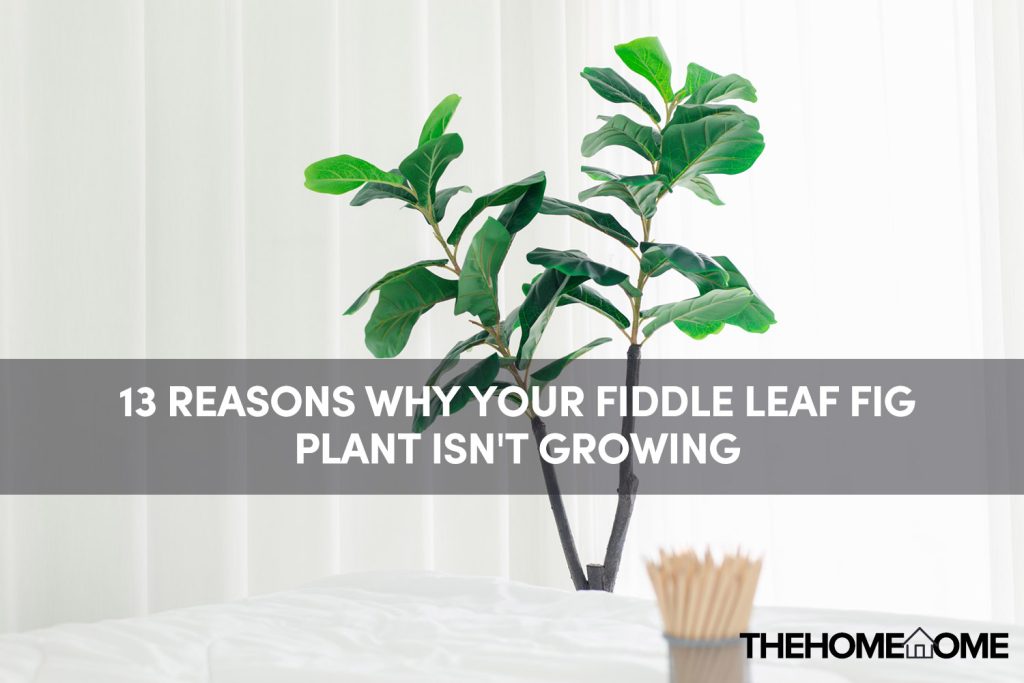The fiddle leaf fig plant is a favorite houseplant to have in your home, with its magnificent green leaves, which help to make your home look naturally alive. Many owners love to decorate it around the house, but you start to notice, that your favorite house plant isn’t growing, and you wonder why?
The fiddle leaf fig has a gradual process of growth, however, when the growth of the plant is significantly slow, or it did grow at some point but now it’s stopped, then something is wrong. There are some reasons why your fiddle leaf fig has stunted growth and that is going to be discussed in this article.
Why your fiddle leaf fig plant isn’t growing, is mainly caused by irregular watering systems, bad drainage systems, lack of pruning, pest and fungus infestation, improper lighting, need for re-potting, and lack of humidity. Therefore, proper watering, nutrients, fertilizers, pot size, and lighting should promote new growth in your fiddle leaf fig houseplant.
The key step in solving a problem is understanding why it has occurred, and the same reasoning applies here. There are various reasons why your fiddle leaf fig isn’t growing, this article is going to discuss these reasons. And the good news is, that they are relatively easy to fix.
The Fiddle Leaf Fig Plant Explained
The fiddle leaf fig plant (ficus lyrata) is a popularly used houseplant, which falls under the fig family, and is a favorite in many homes. The plant is natively grown in Western Africa and is generally found in tropical rainforests.
The fiddle leaf fig is a popular ornament tree also found in many tropical and subtropical gardens.
This plant is relatively tall and peaks at about 15 cm when cared for properly. It is also advised to buy or grow this plant in areas where the climate is suitable, so as to witness the magnificent leaves structure and magical feelings it gives to a garden or home.
Unfortunately, if the plant isn’t properly cared for, it could lead to stunted growth or the plant may stop growing. Read on to find out, the major reasons why your plant isn’t growing and simple steps to fixing it.
Why Your Fiddle Leaf Fig Plant isn’t growing
Here are 13 highlighted reasons, why your favorite houseplant isn’t growing, and these factors must be controlled, to encourage new growth in your plant.
1. Irregular Watering Schedule
Plants need water to grow and to carry out their metabolic function. Also, your plant needs to be watered appropriately, it shouldn’t be under-watered or over-watered. The soil moisture of your plant determines how well your plant would grow, hence a moisture detector helps to detect it.
You should build a regular watering schedule, once a week, and when you do water it, give your plant a generous drink. Good spacing is needed because an over-watered fiddle leaf fig plant and its soil are harder to fix.
But when you notice the browning of the plant’s leaf or the soil gradually fading from the pot, the plant isn’t getting enough water or air.

2. Poor Drainage Systems
For plants to grow well, there’s a need for an effective drainage system or holes, to drain out excess water.
Your fiddle leaf fig needs appropriate moisture, so if there’s excess moisture it could cause root rot and browning of the leaves. Therefore always check that the drainage is working perfectly and you do not overwater the plant.
3. Fungus Infection Due To Root Rot
Overwatering and bad drainage often lead to root rot, and browning of leaves, due to excess moisture. You should only generously water your plant when the soil is dry and ensure the excess water is drained well.
When you notice the plant leaves are browning; inspect the roots, if they are brown, or black and are mushy. You should stop watering, then place the plant in a dry place with adequate lighting. However, if the root rot is too much, it’s better to prune out the affected roots and repot your plant.
Summary: Ensure you water through a regulated watering schedule, and your drainage works effectively.
4. Improper and Inadequate Lighting
Fiddle leaf fig plants flourish in bright, and indirect sunlight. Plants need light for photosynthesis and to perform growth, but the lighting shouldn’t be too harsh or too much. When you notice your plant has yellow thin leaves, then it is not getting enough light. Whilst, if the leaves turn whitish, your plant is sunburnt.
Your plant needs 6-8 hours of indirect sunlight daily, ensure to place your plants on spots with the brightest indirect light and avoid placing your fiddle leaf fig plant directly to sunlight. You can alternatively use artificial light to help them grow if you don’t have enough indirect lighting in your house.
5. Lack of Fertilization
Fertilization helps your plants grow and replenish nutrients lost during watering. If your plants don’t get fertilizers, they become under-nourished and start to show signs of stunted growth, droopy leaves, or browning leaves.
Owners should use a gentle fertilizer on their fiddle leaf fig plant once every week, as they don’t retain nutrients absorbed from the soil. Thus, the need for fertilizers more often.

6. Usage of Wrong Potting Soil
Soil potting mix, is vital for the growth and longevity of your fiddle leaf fig tree plant. The plant requires well-draining soil that can hold enough moisture and is rich in nutrients. You need to understand the soul requirements of your fiddle leaf fig, and then pot the plan with a correct soil mix.
7. The Need For Repotting
Another reason why your plant isn’t growing is that it may have become root-bound and has outgrown its initial pot. You can check for this, by noticing any root popping out either at the top or bottom of the soil.
Your plant needs enough space to grow and spread, and when the pot becomes small, it may hinder its growth. In case this happens, simply repot the plant in a larger pot, along with a fresh correct potting soil.
Summary: fiddle leaf fig plants grow bigger, in bigger pots.
8. Sensitive To Temperature Fluctuations
Fiddle leaf figs are sensitive to changes in temperature, the ideal temperature for the plant is 60-75°F, and temperatures lower than 50°F are not suitable for them.
During winter, place them away from the window, and use humidifiers to provide warmth to your plant. Don’t also expose them to cold drafts, or keep them too close to the fireplace, as it can burn the leaves.
9. Not Tending To The Leaves
Plants’ leaves are very important as they help them absorb light and breathe in carbon dioxide. Thus, dust and dirt on the leaves can hinder the plant from carrying out its photosynthesis process.
You should wipe the leaves with soap water, and room temperature water every 3-4 months, and shower the plant thoroughly once every 6 months. This helps to prevent pest infestation, ensure the leaves breathe, and absorb lighting for growth.
10. Pest Infestation
This is very harmful, as it reduces your plant’s growth, changes the color, and can also be deadly for your plant. Small holes or spiderweb-like structures mean, that pests have attacked your plants. Pests like spiders, mites, scales, and mealybugs are harmful to your plants.
The organic way to clean them is with neem oil products or a mixture of baking soda and mineral oil, to wade off pests, you can also use pesticides to keep pests away from your plants.

11. Bacterial Infestation
This turns your plant leaves yellow and you would notice brown spots across the leaves. It also majorly happens to new leaves. If the leaves affected is 50%, remove the affected leaves, and repot the rest using a new potting mix. Ensure you’re not overwatering the plant and it’s getting enough indirect light.
12. Lack Of Humidity Can Be An Issue
Plants need humidity, air, and indirect sunlight to grow well. When the air is dry or cold, your plants grow slower and the leaves turn color. You can solve this by misting your plant, or using a dehumidifier.
13. Pruning is Important
This can help restore the health and growth of your plant. It is better to use sharp pruning scissors and cut out only the dead or affected leaves of the plant. Do not cut too many affected leaves at once and ensure it’s a simple quick cut.
Additionally; change of seasons, stress, and acclimatization to a new environment are reasons that can also affect the growth and health of your fiddle leaf fig houseplant.
Frequently Asked Questions
Are fiddle leaf fig plants slow-growing?
It is a slow-growing plant that may take 10-15 years to reach its full peak. However, after 3 or 4 years of growth, the beauty of the ornamental house plants starts to show.
How often do fiddle leaf fig plants grow new leaves?
During the growing season, it should put out new leave every 4-6 weeks, although during winter or dry seasons it may not sprout any new leaves.
How can I make my fiddle leaf fig grow faster?
You need to water properly, use good potting soil, prune when necessary, give it proper indirect lighting and use adequate drainage systems.
Final Thoughts
Fiddle leaf fig plants are ornamental houseplants, that add a natural pleasant touch to your home.
However, this is only appreciated when your plant, is healthy and growing well. This article has highlighted some reasons why your houseplant isn’t growing and simple methods to solve the issue. Now you can in simple steps identify and solve any issues that arise with your favorite house plant.

